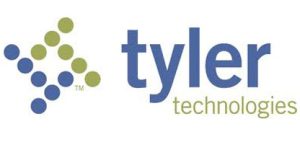In an ideal world, workplace disputes wouldn’t happen. Unfortunately, that’s not the reality we live in. However, with President Biden’s Executive Order (EO) on Diversity, Equity, Inclusion and Accessibility in the Federal Workforce calling for the creation of a governmentwide diversity, equity, inclusion and accessibility (DEIA) plan and agency-specific strategic plans, federal government workers now have a clearer path than they had before to lodge complaints.
In fact, positive changes are already happening. The State Department’s Office of Civil Rights processed 169 new formal complaints of discrimination, up from the previous two years. The fiscal year 2022 Office of Personnel Management (OPM) Federal Employee Viewpoint Survey found that 69% of respondents reported positive perceptions of agency DEIA practices, but that still leaves almost a third of workers who didn’t.
During times of tension, it’s easy for employees to lose trust in their agencies. By being transparent and accountable from the moment a complaint is filed through to its resolution, agencies can maintain that trust. One way to achieve that level of transparency is through the use of workforce case management software.
Workforce case management software provides a way for agencies to manage complaints in an organized, secure manner. It allows them to ensure privacy of the individuals involved while granting role-based access to those who need it to make updates and track the case’s progress. It gives everyone a common spot to find all the information they need.
Additionally, workforce case management software helps agency staff manage their workloads. When the system can be set up to automatically comply with requirements such as those from the Equal Employment Opportunity Commission, case managers can spend less time checking those boxes and more time on the complexity associated with sensitive complaints.
Six Pillars of Case Management
Workforce case management has applicability in six main areas:
- Equal employment opportunities
- Civil rights
- Reasonable accommodation
- Anti-harassment
- Alternative dispute resolution
- Labor and employee relations
But not all case management solutions are equally effective. The filing of a complaint spurs a flurry of investigations and evidence collection. Ultimately, files could contain a variety of data (e.g., emails, faxes and video and audio recordings), most being of a sensitive nature.
Here are seven capabilities of an effective workforce case management system:
- Receives complaints through an online portal to protect anonymity
- Manages complaints using business rules and workflows
- Uploads important documents and files to a case record
- Tracks timelines, due dates and service levels
- Captures data from multiple sources
- Generates standard reports and real-time dashboards
When people say or do the wrong thing in the workplace, it is the ethical and legal responsibility of the employer to take concerns and complaints seriously. As employers, government agencies can use workforce case management technology to help manage, track and report on those cases as they arise to show that their employees can trust them.
Photo by Mimi Thian on Unsplash
Sponsored by:






Leave a Reply
You must be logged in to post a comment.